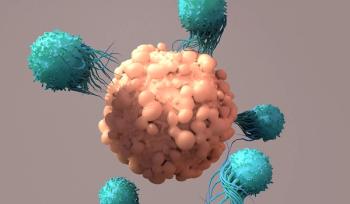
- BioPharm International-05-01-2015
- Volume 28
- Issue 5
Best Practices in Facility Design
Integrating advances in facility design can meet differing and emerging bioprocessing needs.
Multiple business and market forces are driving change in facility design and operation including the requirement to establish “in-country” manufacture for local supply as authorities in smaller, yet faster, growing markets push a localization agenda. Another driver of change is the need to achieve faster delivery of new drugs to clinical trials followed by faster speed to market if approved. This change means more agile approaches to supporting the supply of clinical and development lots during pre-commercial phases are needed. Downward payer pressure on prices is yet another motivation to transform current manufacturing practice resulting in the necessity to pursue lower up-front build costs followed by lean low-cost operation.
The challenge of meeting these business and market needs is being met via lower cost, flexible, and quicker-to-build facilities while achieving world-class quality standards. Innovative approaches and disruptive technologies--such as modular facilities, continuous bioprocessing, closed systems, single-use systems, and traditional processes--are being combined and incorporated into these plants.
Modular facilities
Modular biofacility design is an approach that subdivides the architectural and bioprocessing system into smaller parts called modules or skids that can be independently created and then combined and used for different purposes. Modular approaches can be explained as separating out discrete, scalable, reusable elements, rigorous use of well-defined interfaces, and making use of industry standards for those interfaces. Modularity offers benefits such as reduction in design and manufacturing cost from less customization, shorter lead times, and flexibility in design, as well as the ability to increase mobility and deployment in environments less accustomed to biopharmaceutical manufacturing.
Continuous bioprocessing
Continuous bioprocessing is a production method used to process biological drug substance without interruption. It contrasts markedly with the majority of biological drug manufacturing that is batch based. The advantage of continuous processing is the potential to remove hold steps, reduce factory footprint, and the prospect of effective scale out, ultimately lowering capital and operating cost. Continuous processing can be coupled with process intensification, which seeks to maximize biomass produced per cubic meter of processing capacity per unit time, through better expression systems and higher yielding processes.
Closed systems
Ensuring systems are closed through the manufacturing process provides opportunity to rethink environmental control to the extent that space around the process equipment need not be housed in traditional cleanroom conditions. Closed systems further reduce the complexity and cost of facility design and simplify operational running. Physical segregation of unit operations becomes unnecessary except for pre- and post-viral clearance steps. In time, even this separation will be tested for necessity.
Single-use technologies
Single-use technologies are routinely selected as solutions for bioprocessing requirements at lower-end commercial scale. Advances are centering on making their consumption repetitively effective from a supply-chain perspective, creating economic, consistent, and sustainable use to scale-out production volumes. Speed of startup, flexibility, and elimination of sterilization/cleaning requirements are benefits accruing from this approach.
Traditional vs. new
Integration of some or all of these facility designs plus targeted advances in online process monitoring, robotics, automation, and real-time release are transforming the biologics manufacturing landscape. Step-change implementation is not straightforward in a highly regulated and conservative industry, but innovative approaches to scientific risk evaluation, mitigation, and elimination hold the key to success. The past and current state for manufacturing biological drugs is one featuring large-scale, high capital cost, fixed assets, and location in western markets (e.g., United States, Ireland, and Singapore). The bioprocessing equipment is stainless steel, and significant time and cost is required to validate and scale up these facilities. When fully utilized and producing limited variety of lower titer products, they are relatively unit-cost efficient. These types of facilities are not at the end of their usefulness; in fact 95% of manufacturing capacity is still in this format. Investment continues to be channeled into large-scale stainless steel capacity including in the Asian region.
Revolutionary facility design and operation is a complementary addition to the industry’s array of capability that meets differing and emerging needs and offers to help expand access to biologics in new markets.
---Simon Chalk, director of the BioPhorum Operations Group
Article DetailsBioPharm International
Vol. 28, No. 5
Page: 23
Citation: When referring to this article, please cite it as S. Chalk, “Best Practices in Facility Design,” BioPharm International 28 (5) 2015.
Articles in this issue
over 10 years ago
Single-Use Biocontainer Increases Customizabilityover 10 years ago
Biomanufacturing Outsourcing Globalization Continuesover 10 years ago
Ensuring the Quality of Biologicalsover 10 years ago
How to Stay Abreast of Shifting Regulations and Remain Compliantover 10 years ago
Filtration Technologies Advance to Meet Bioprocessing Needsover 10 years ago
Innovations and Adaptations in the Cold Chainover 10 years ago
An Update on the Quality Metrics Initiativeover 10 years ago
Streamlining Raw Materials Testingover 10 years ago
Diaphragm Valve Streamlines InstallationNewsletter
Stay at the forefront of biopharmaceutical innovation—subscribe to BioPharm International for expert insights on drug development, manufacturing, compliance, and more.





